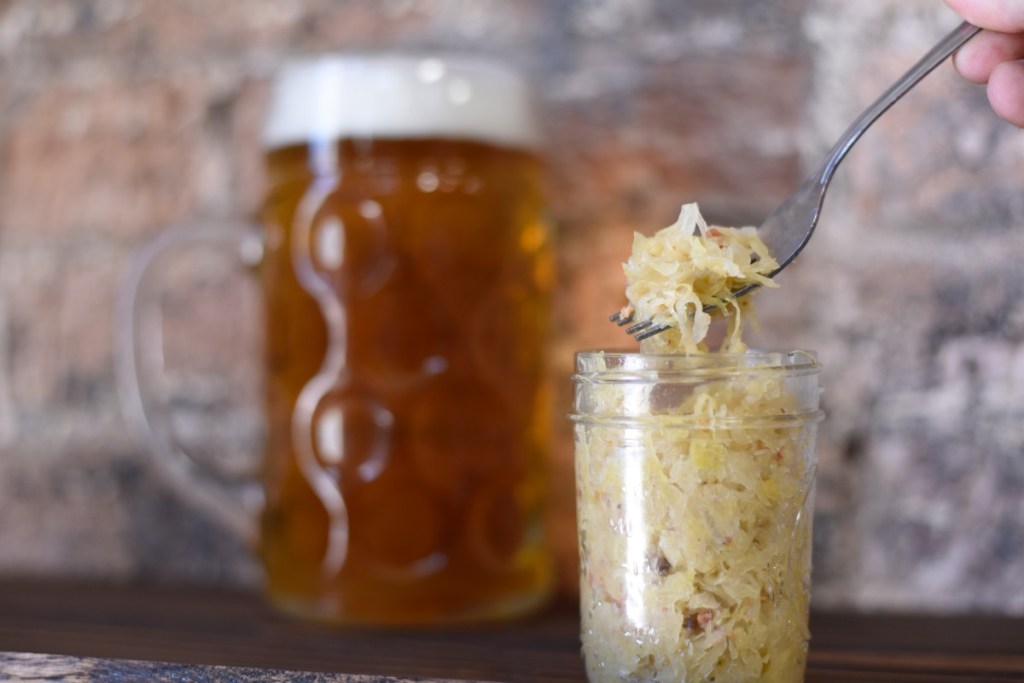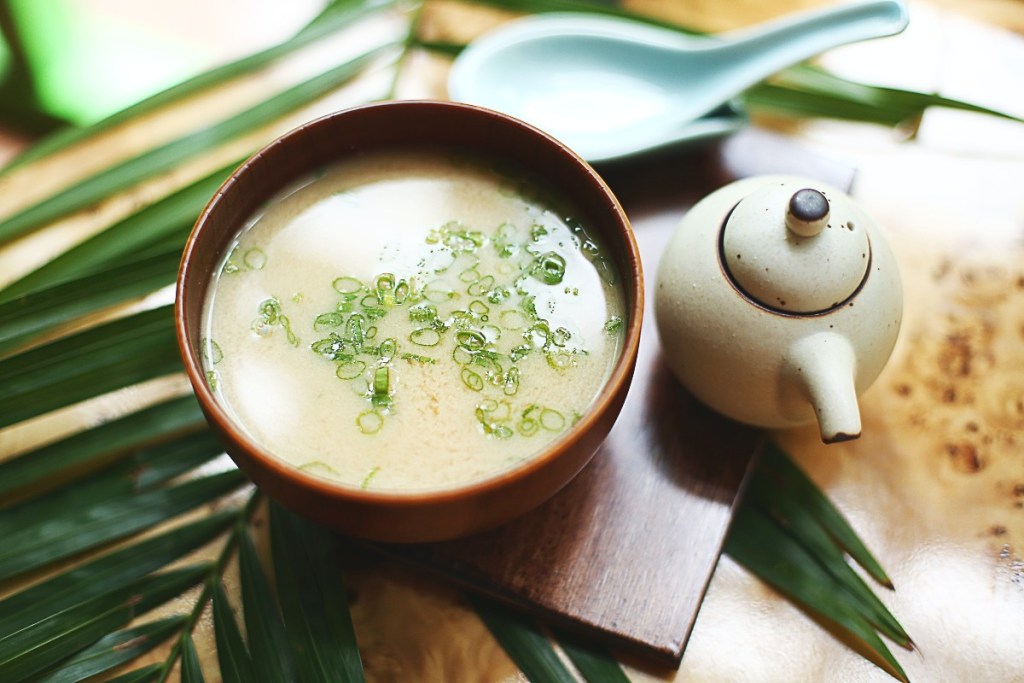If you’re feeling experiencing digestive issues, you may have poor gut health. Gut health can be affected by various issues, including food intolerances, allergies, and bacterial imbalances.
One way to correct the issues is through diet, including adding probiotics. Probiotics are full of good live bacteria. They naturally live in your body, but adding foods with probiotics to your diet can help encourage that good bacteria to fend off the harmful bacteria that can cause gut issues.
Greek yogurt, aged cheeses, and kefir are favorite sources of probiotics, but not everyone likes the taste, and others follow vegan diets. These products may also exacerbate food allergies and dairy intolerances. If Greek yogurt isn’t an option for you, try these dairy-free foods that supply probiotics instead.

Sauerkraut
Sauerkraut, a favorite dish in Germany and staple on Oktoberfest menus, is fermented raw cabbage. During the fermentation process, lactobacillus, a bacteria also found in yogurt, helps produce lactic acid. This process doesn’t just give sauerkraut its sour taste. Foods with probiotics typically make use of lactic-acid-producing bacteria. Research shows these probiotics can help aid in digestion and immune health.
Kimchi
Like sauerkraut, kimchi is fermented cabbage with lactic-acid-producing bacteria. People often use kimchi as a side dish or condiment. It’s also sour but can also be sweet or spicy, so it may be a good addition to your diet if you crave those flavors plus probiotics. Kimchi may also help reduce some of the side effects and symptoms of poor gut health. When your gut is off, you may feel sluggish all the time. Kimchi is also a natural source of riboflavin, or vitamin B2, which can bolster energy.
Kombucha
Kombucha has been trending as of late, and the fermentation process gives it gut-boosting benefits. People who brew the fermented tea use a symbiotic culture of bacteria and yeast, better known as a SCOBY starter. This ingredient, which you can make at home or purchase in a health food store, doesn’t just add fizz and tangy flavoring to kombucha; it ups the probiotics in the drink, aiding in gut health improvement. Just remember: Everything is best in moderation. Too much kombucha can actually exacerbate GI distress, so limit your intake to 12 oz. per day.
Apple cider vinegar
Apple cider vinegar’s strong flavor makes it a favorite ingredient in homemade salad dressings and other recipes. It turns out it may do your gut good. During the fermentation process, yeast and sugars build up. This buildup, also known as “the mother,” boasts micronutrients like acetic and citric acids that contain probiotic content. Organic, raw apple cider vinegar usually has “the mother.”
Tempeh
Tempeh is a fermented soybean food that’s similar to tofu. Vegans and vegetarians often stock up on tempeh as a source of protein. Tempeh also boasts probiotics. During fermentation involves a breakdown of phytic acid. As a result, tempeh may help with digestion and inflammation. Meatless burgers are sometimes a good source of tempeh. It’s important to note that you’ll usually find pasteurized tempeh in the stores. Pasteurization can reduce its probiotic content. Though it’s a great addition to your diet, and the fiber it contains will also aid in digestion, don’t solely rely on it to improve gut health.

Miso
Miso is a common ingredient in soups, especially at sushi restaurants. It’s also fermented, typically made from soybeans or barley, and contains the probiotic strain A. oryzae. Eating it may help keep gas, constipation, bloating, and irritable bowel symptoms at bay by fending off harmful bacteria trying to invade your gut.
Diet is a natural way to improve gut health, particularly foods with probiotics. Greek yogurt and kefir are often the first-line food recommendations by dietitians and doctors, but not everyone can eat it. People with allergies or vegan diets or who dislike Greek yogurt can find dairy-free foods that supply probiotics. Fermented foods, ingredients, and beverages, like sauerkraut, kimchi, kombucha, apple cider vinegar, tempeh, and miso, are all good sources of it. Keep in mind some of these foods may be high in sodium, which can exacerbate bloating, so you’ll want to eat them in moderation. Though diet can help gut health, it is not always a fix-all. Speak with your doctor if you continue to struggle with digestive issues. There may be other factors, like unknown allergies or conditions like irritable bowel syndrome, at play.
BlissMark provides information regarding health, wellness, and beauty. The information within this article is not intended to be medical advice. Before starting any diet or exercise routine, consult your physician. If you don’t have a primary care physician, the United States Health & Human Services department has a free online tool that can help you locate a clinic in your area. We are not medical professionals, have not verified or vetted any programs, and in no way intend our content to be anything more than informative and inspiring.



